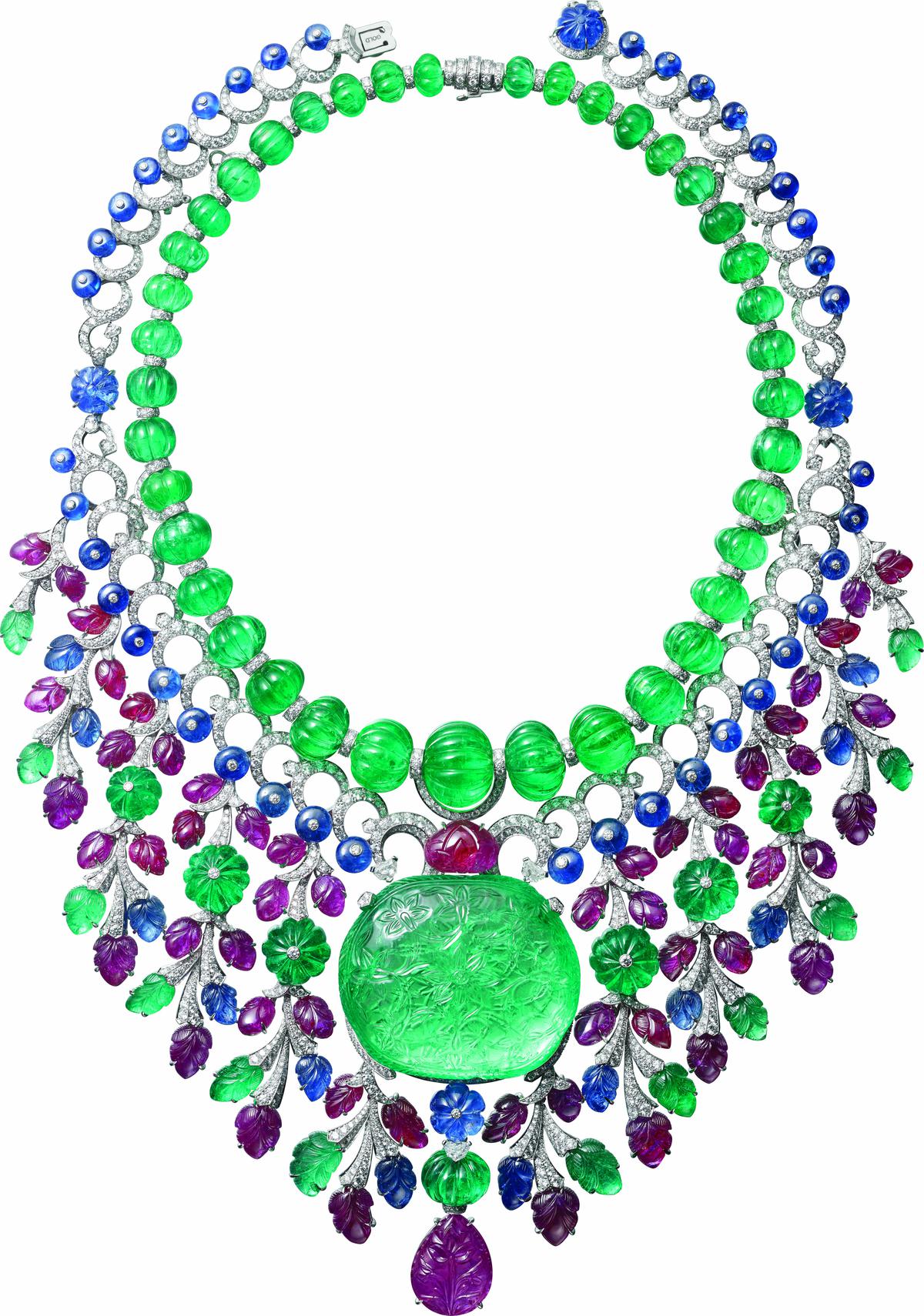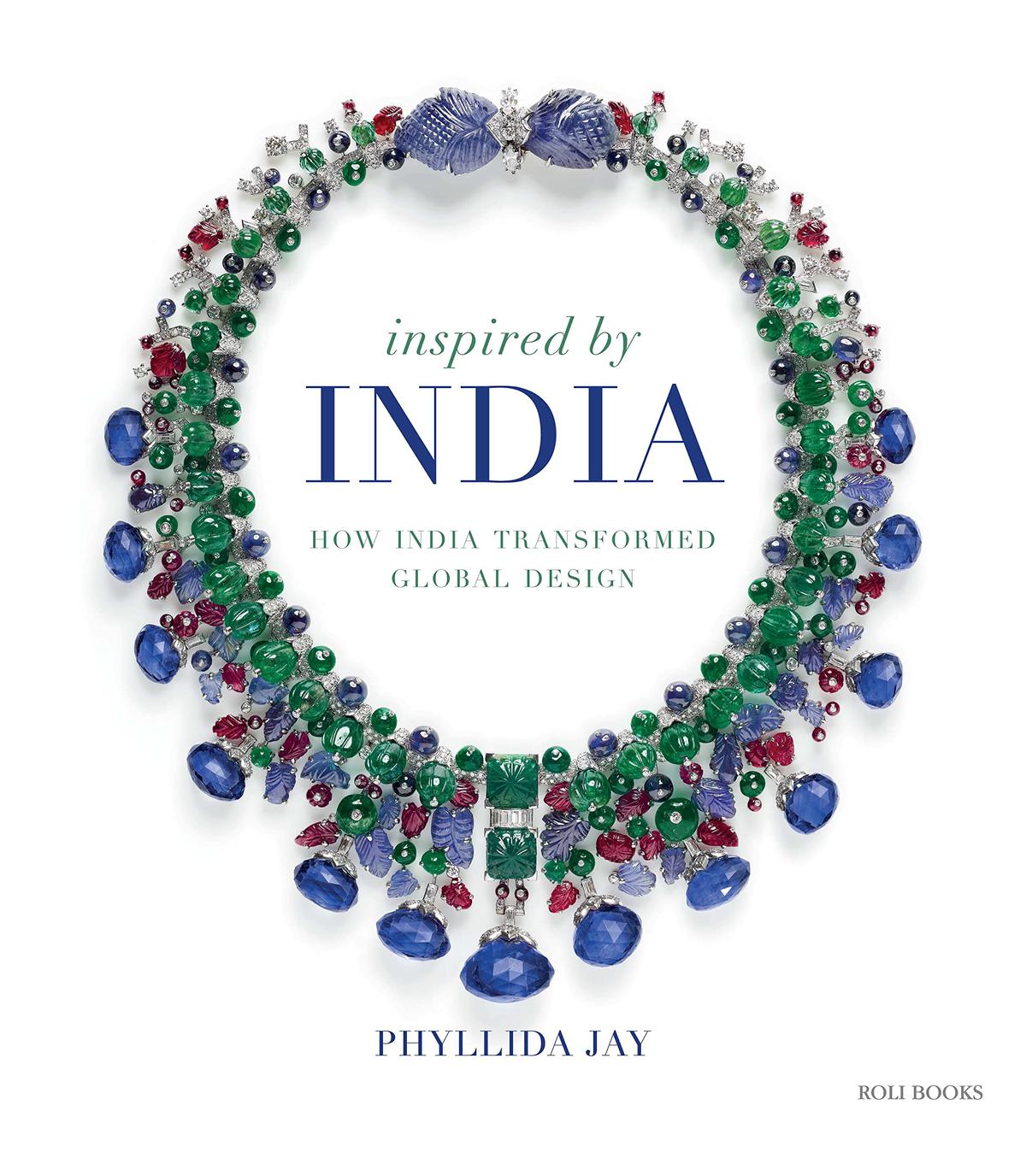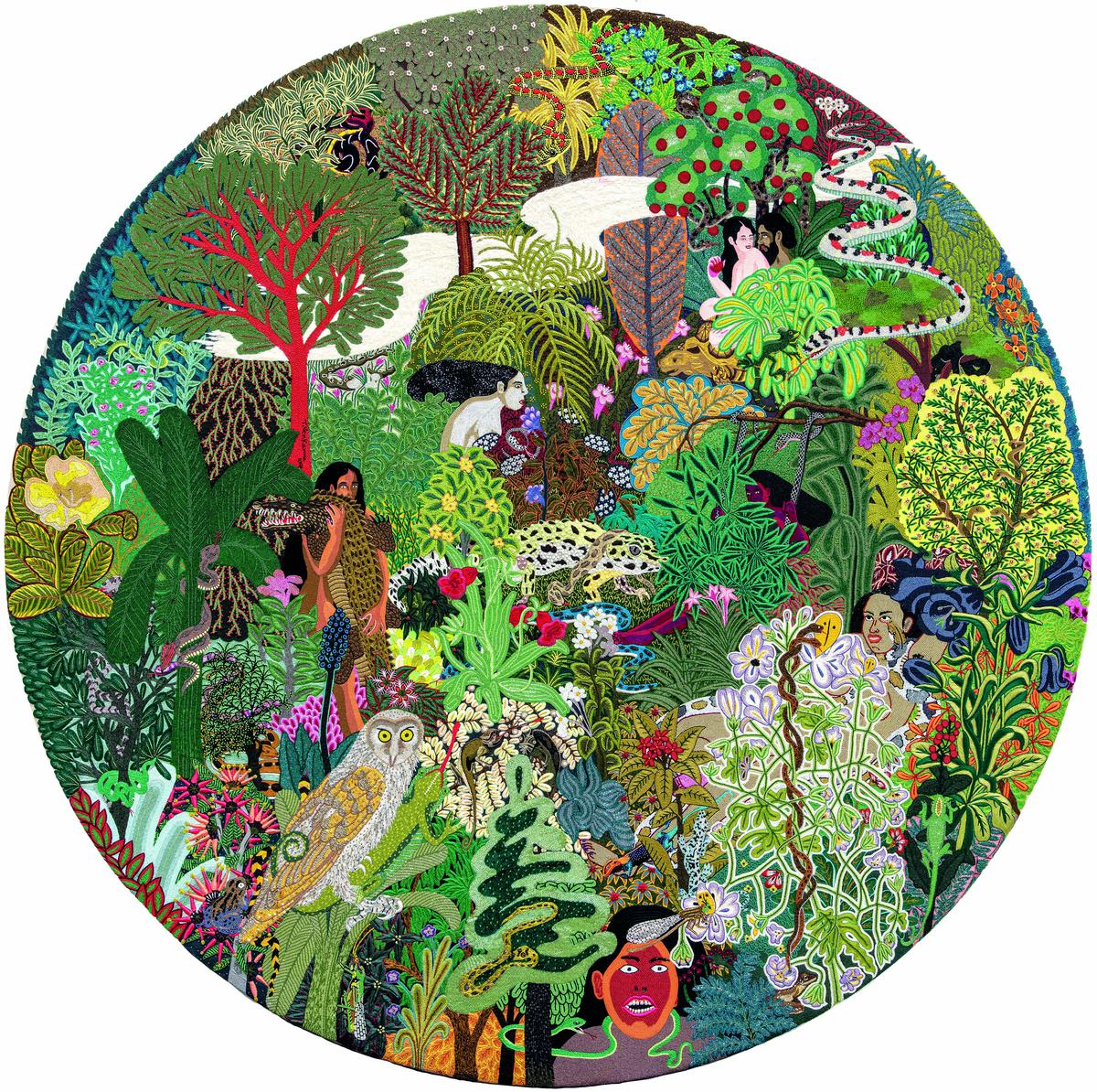From Louis XIV’s vision for Versailles to Balenciaga’s homage to the sari, Inspired by India explores how our textiles and crafts influenced global design. But what is the line between cultural appropriation and appreciation?
From Louis XIV’s vision for Versailles to Balenciaga’s homage to the sari, inspired by india It explores how our textiles and crafts influenced global design. But what is the line between cultural appropriation and appreciation?
The fashion industry has been undergoing a reckoning in recent years, with questions of appropriation or appreciation becoming the defining norm when drawing inspiration from cultures, communities and crafts. So many things that went unnoticed even 10 years ago now seem problematic: white models dressed as tribals gopis Brands applying the aesthetic of handcrafted block prints to the Paris catwalks, or to mass-produced fast fashion. But the reduction of Indian communities and their symbols to “exotica” is a product of relatively recent history that belies the complexity of the country’s role in global fashion and luxury for millennia.
Today, the idea of the European savior dominates the global geography of luxury. It is, therefore, even more ironic to realize the extent to which Indian textile traditions and dress forms have shaped the contours of this luxury – particularly the history of the textile trade and, more recently, the role of Indian embroidery in luxury supplies. Through. Chain.
History shows that the superior artistry of our textiles came with the association of a place with a better order of life. The fine robes of Shah Jahan’s court, details of which were transmitted through 17th-century travelers, are believed to have helped fuel Louis XIV’s absolutist ambitions and vision for Versailles. But the sheer depth and scope of India’s contribution to global fashion began in Roman times and intensified between the 16th and 18th centuries – playing an essential role in changing notions of gender, body, comfort and comfort in Europe and America.
A fitted women’s chintz jacket (1750), cut to display imported chintz from the Coromandel Coast. In the Netherlands in the 18th century, chintz jackets were popular for daily use and were worn as part of traditional dress. Photo Credit: Rijksmuseum, Amsterdam
Through the novels of Jane Austen in Napoleonic France and in Regency England, we see how fine Indian muslin wear reflects the status, taste and connoisseur of the consumer. Such was the popularity of brightly colored chintz-like fabrics that France and England banned their import for decades in the 18th century to protect their own silk and wool mills. However, the desire for these vibrant garments meant that they were restricted and worn in the privacy of the home, despite heavy fines.
of jewelry, settings and customs
Indian jewelery has also long provoked desire and envy. The erstwhile maharajas were forced to play the role of passive partners during the Raj, often taking part in events such as the Delhi Durbar and with their jewelry to legitimize Queen Victoria as Empress of India during the height of colonial rule. needed to be decorated. Perhaps this coercion in Auto-Orientalism made so many Indian princes seek an alternative aesthetic used by the Raj.

Rajasthan Necklace with 136.99 carat carved cushion-shaped emerald from Colombia (Cartier 2016) | Photo Credit: Amelie Gareau, Cartier Collection
Denied the suffrage, they sought self-expression in the language of modernity they could make their own. They kept coming to the jewelers in Place Vendme, Paris, to reset their jewellery. These commissions, in turn, deepened the Parisian jewelers’ knowledge and understanding of Indian jewelry and setting techniques. The jewels of the Maharajas inspired a style that became a hallmark of early 20th-century jewelry: a mix of exquisitely carved Mughal gems and unmistakably Indian color combinations with the elegant lines of Art Deco.
Now, the gleaming fantasy world of Maharajas has been reimagined as an aspirational form of heritage luxury for Indian consumers, especially in the mass wedding market. Closely associated with Bollywood and celebrity-driven wedding trends, some argue that this world of Maharaja Chic is so fanciful as to be beyond questions of appropriation. A similar argument is made for many aspects of Indian culture, such as the Paisley motif, which are the product of deep global entanglements where it is difficult to establish where one cultural imprint ends and another begins.
Yet, this vein of thought does not address how images and objects are often used in ways that may serve to reinforce some of India’s stereotypes to the exclusion of other representations. Nor does it account for the labor that lies behind its aesthetics, particularly the work of India’s artisans, who embroider, embellish and weave some of the country’s most recognizable symbols of heritage and identity.

book cover inspired by india
All this begs specific questions: How can India’s rich cultural heritage inform designers in ways that dispel unchanging stereotypes, and reward and recognize the communities and artisans on which fashion and luxury so often depend? How can we overcome the limited and possessive notions of culture that often lurk in debates around cultural appropriation? What can history, which spans the spectrum of appropriation, exploitation, colonial domination and sanskritisation, tell us about the present and, more importantly, the future?
When Cloth Went to Europe
In inspired by india, the chapter on the saree deals with one of the most enduring symbols of India. Its global representation has often turned to exotica, influenced in no small part by the alluring aesthetics of our biggest cultural export, Bollywood movies. Yet a more nuanced study of the sari reveals its role in inspiring revolutionary approaches to the body through fashion by some of the most iconic designers of the 20th century. For example, Cristóbal Balenciaga studied drape and interpreted it in an innovative and respectful way that paid tribute to it. We see a similar depth of engagement in the work of Gianfranco Ferre and Madame Grace. This is expected to lead to the innovative work of designers like Tarun Tahiliani, Amit Agarwal and Gaurav Gupta.

Pencil and linen hand embroidery by T. Venkanna | Photo credit: Abbey Mascara; Artwork Copyright: T. Venkanna & Gallery Mascara
Now, a new generation of photographers like Ashish Shah, Prarthana Singh and Rid Burman are challenging the conservative representation of India. While integrating Indian inspiration, many international brands are beginning to recognize the importance of working with local creatives. Some European luxury brands such as Dior are beginning to address the systemic invisibility of India’s finest embroidery artisans in their supply chain and provide some visibility to the important role of Indian embroidery in European luxury.

A draped saree by fashion designer Gaurav Gupta. Photo Credit: Courtesy Gaurav Gupta
Pushing against the weight of history is not easy, but it is important. A set of images of art embroidery in the chapter ‘India Redux’ by artist T. Venkanna and Kalath Sansthan, a Lucknow-based non-profit organization dedicated to craft preservation and artisan education, founded by Maximiliano in 2016. Modesty. Ludic and painterly, art embroidery transcends the usual boundaries of this craft form and stimulates new ways of viewing and appraising the work of artisans. Kalahath Institute offers a rigorous curriculum for talented young embroiderers, providing them with the skill set to make the most of the opportunities offered by the markets of the 21st century. Following in their footsteps, the Mumbai-based Chanakya School of Craft, supported by Dior, has used the work of artisans in collaborations between brands and artists such as Manu and Madhavi Parekh.
Appreciation is about rigorous research and respectful engagement with another culture, and it is also about investing substantial time, study, and dedication to create innovations inspired by it, rather than reproducing old clichés. It is also about giving credit, compensation and support to the communities and artisans on whose shoulders much of India’s intangible cultural heritage rests. Any designer or brand inspired by India should start from that premise.
Inspired by India: How India changed global designPhyllida Jay explores the complex history of more than six centuries of cultural exchange between India and the world. Published by Roli Books.